Accepted Scientific Name: Hoya carnosa (L.f.) R.Br.
Prodr. Fl. Nov. Holland. 460. 1810 [27 Mar 1810] R.Br.

Asclepias carnosa (Hoya carnosa) Photo by: Giuseppe Distefano
Origin and Habitat: Eastern Asia, the Pacific islands and Australia.
habitat: Hoya carnosa grows in lowland tropical and subtropical rain forest and hangs high in the trees and is semi-epiphytic. It is partially parasitical, its roots penetrating the bark of the trees which support.
Synonyms:
See all synonyms of Hoya carnosa
back
Accepted name in llifle Database:Hoya carnosa (L.f.) R.Br.Prodr. Fl. Nov. Holland. 460. 1810 [27 Mar 1810]Synonymy: 18
Cultivars
(2):
back
Common Names include:
ENGLISH: Honey plant, Wax-plant, Porcelain Flower, Waxplant, Waxvine, Hoya, Waxflower
CHINESE (中文): 球兰
CZECH (Čeština): Voskovka masitá
DUTCH (Nederlands): Grote wasbloem
ESTONIAN (Eesti): Harilik vahalill
FINNISH (Suomi): Isoposliinikukka
FRENCH (Français): Fleurs de porcelaine, Fleurs de cire
GERMAN (Deutsch): Wachsblumen
ITALIAN (Italiano): Fiore di cera
POLISH ( Polski): Hoja różowa
PORTUGUESE (Português): Flor de cera
RUSSIAN (Русский): Хойя мясистая.
SERBIAN (Српски / Srpski): порцелански цвет, xоја, воштани цвет
SPANISH (Español): Flor de cera
SWEDISH (Svenska): Porslinsblomma
UPPER SORBIAN (Hornjoserbsce): Pyšna wóskowka
VIETNAMESE (Tiếng Việt): Cẩm cù
Description: Hoya carnosa, the wax plant, is a popular house plant grown for its attractive glossy foliage, and sweetly scented flesh coloured flowers so exactly resembling wax, that you might almost make it into candles. It is mesmerizing not only because of its fragrance and waxy appearance but also because of the fact that each flower looks like a five-pointed star and the cluster of flowers also arranges itself in a star shape. H. carnosa has been in cultivation for more than 200 years and has given rise to numerous named cultivars, e.g. showing leaves spotted with silver-grey or leaves variegated with gold, or irregularly undulate leaves.
Habit: It is an evergreen, epiphytic, CAM, shrubby climbers up to 6 metres hight.
Stems: Weakly succulent, pale grey, smooth, glabrous.
Leaves: Petiole 1-1,5 cm long, lamina broadly ovate-cordate, ovate or ovate-elongate, 3,5-13 cm long, 3-5 cm broad, thick, fleshy, obtuse or acuminate, base rounded to slightly cordate.
Inflorescence: Up to 30-flowered, pendent or somewhat erect; peduncle to 4 cm long. Inflorescences are born in the axils of the leaves from specialized perennial structures referred to as spurs (flowers may not be produced when the spurs first appear, but in time buds emerge from the tips. Each season new flowers are produced on these same spurs, so they should not be damaged or removed).
Flowers: The flower shape is typical of hoya plants, small, flat, star-shaped. Each small flower is made up of two stars, one on top of the other. The so called bottom star (corolla) is larger in size than the upper centered star which is termed the corona. Pedicels 2 - 4 cm, reddish, pubescent. Sepals elongate; Corolla 1,5-2 cm in diameter, fleshy, creamy-white, but may vary from near-white to dark pink. Corolla-lobes broadly ovate or triangular, margin revolute, inside covered in tiny hairs giving a fuzzy sheen to them. Corona white; corona-lobes ovate-lanceolate, upper face convex, outer appendage acute, inner appendage acute, reddish. The flowers are heavily scented and may produce a drop of nectar hanging from each petal.
Blooming: Flower usually blooms in early summer.
Fruits: Fusiform, 6-10 cm long, 5-15 mm in diameter.
Seeds: Narrow, tuft of hsirs 2,5 cm.
Bibliography: Major references and further lectures
1) Trimen, Henry “Hortus Zeylanicus; A Classified List of the Plants, Both Native and Exotic, Growing in the Royal Botanic Gardens.” P.R. Deniya. 1888
2) Phillips, Roger. “The Random House Book of Indoor and Greenhouse Plants“ (Vol. 2). New York, NY, U.S.A.: Random House, Incorporated. 1997
3) Focke Albers, Ulrich Meve "Illustrated Handbook of Succulent Plants: Asclepiadaceae" Volume 4 Springer, 2002
4) James Cullen, Sabina G. Knees, H. Suzanne Cubey “The European Garden Flora Flowering Plants: A Manual for the Identification of Plants Cultivated in Europe, Both Out-of-Doors and Under Glass” Cambridge University Press, 11/ago/2011
5) Dale Kloppenburg, Ann Wayman “The Hoya Handbook: A Guide for the Grower and Collection” Orca Publishing Company, 1992
6) Anders Wennström und Katarina Stenman “The Genus Hoya - Species and Cultivation”, Botanova, Umeå 2008
7) Shane Smith “Greenhouse Gardener's Companion: Growing Food and Flowers in Your Greenhouse Or Sunspace” Fulcrum Publishing, 2000
8) M. D. Wellcome “Talks about Flowers” Library of Alexandria 1981
9) Catherine Sinclair “Shetland and the Shetlanders: or, The northern circuit” D. Appleton & co., 1840
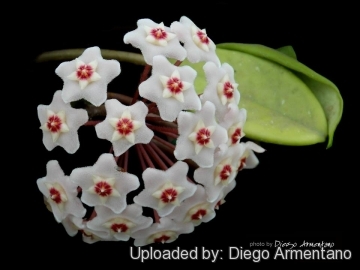 Asclepias carnosa (Hoya carnosa) Photo by: Diego Armentano
Asclepias carnosa (Hoya carnosa) Photo by: Diego Armentano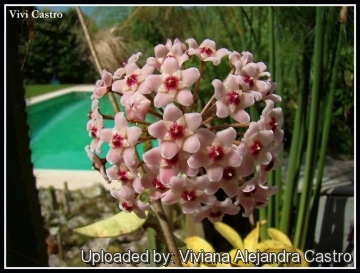 Asclepias carnosa (Hoya carnosa) Photo by: Viviana Alejandra Castro
Asclepias carnosa (Hoya carnosa) Photo by: Viviana Alejandra Castro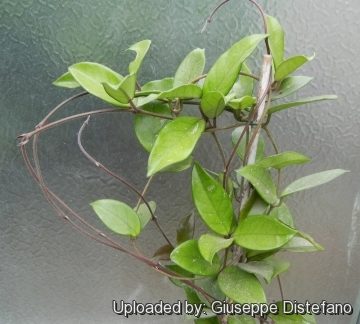 Asclepias carnosa (Hoya carnosa) Photo by: Giuseppe Distefano
Asclepias carnosa (Hoya carnosa) Photo by: Giuseppe Distefano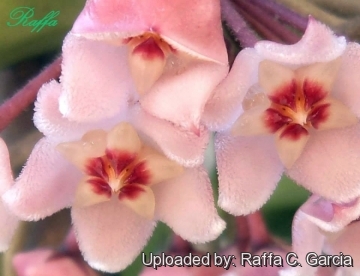 Asclepias carnosa (Hoya carnosa) Photo by: Raffa C. Garcia
Asclepias carnosa (Hoya carnosa) Photo by: Raffa C. Garcia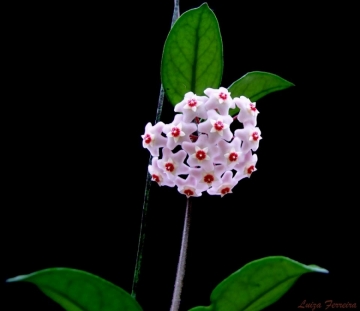 Asclepias carnosa (Hoya carnosa) Photo by: Luiza Ferreira
Asclepias carnosa (Hoya carnosa) Photo by: Luiza Ferreira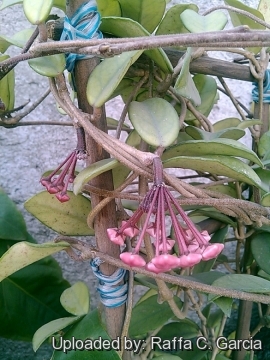 Asclepias carnosa (Hoya carnosa) Photo by: Raffa C. Garcia
Asclepias carnosa (Hoya carnosa) Photo by: Raffa C. Garcia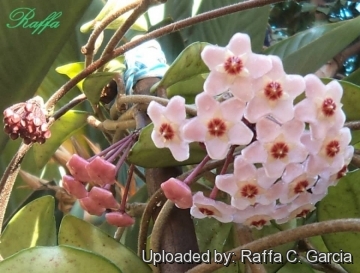 Asclepias carnosa (Hoya carnosa) Photo by: Raffa C. Garcia
Asclepias carnosa (Hoya carnosa) Photo by: Raffa C. Garcia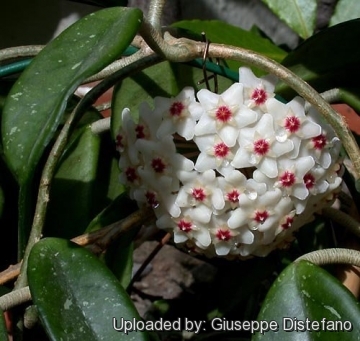 Asclepias carnosa (Hoya carnosa) Photo by: Giuseppe Distefano
Asclepias carnosa (Hoya carnosa) Photo by: Giuseppe DistefanoCultivation and Propagation: Hoya carnosa is an excellent plant for house culture as it stands the extremes of heat and cold better than most plants, and is not easily injured by neglect it can be trained to climb on trellis-work to almost any height, and when in bloom, which continues for half the year, it is a very interesting plant. People often just let them go about their business, trailing around the perimeter of a windowsill and even through-out the house. Some also let them trait out of a hanging pot with their thick waxy leaves looking quite orderly. There are a few Hoya's which make ideal houseplants, Hoya carnosa is one of them.
Growth rate: Although the vines can reach lengths of 6 m in the wild, cultivated plants generally extend 1,5-2 m, twisting around supports to which they cling or hanging down in attractive cascades from suspended pots. The all green variety tends to grow more quickly (although it's still slow by most houseplant standards) and is arguably more hardy, but it also comes in a some pretty slow growing variegated varieties.
Potting medium: Bacuse it is an epiphyte benefits from being potted up in a very well-draining and porous potting medium that allows some air to get to the roots; typical mixes include, peat, with some fibrous soil and sand along with large-grade drainage material such as perlite, pumice, or ceramic balls. Often specialized hoya growers either use only chopped coconut husk or a good orchid potting mixture for growing their hoya plants. The medium needs to be moisture-retentive.
Fertilization: The plants should be fed regularly with a fertilizer suitable for epiphytic plants.
Watering: With its succulent qualities it's quite adapt at storing water for longish periods of time between waterings. Water regularly in summer, but do not overwater ( wet-sensitively) and let the plants to dry out between watering and then water again. Its roots are easily lost in pots that stay damp for any length of time. Keep quite dry with ample airflow in winter (It would probably tolerate one watering a month). In the rest period no high atmospheric humidity. Care must be taken with watering as they tends to become swollen and untidy in growth habit if given too much water and shade.
Fertilization: During the growing season enrich the soil using a fertilizer rich in potassium and phosphorous, but poor in nitrogen, because this chemical element doesn’t help the development of succulent plants, making them too soft and full of water.
Exposition: This hoya species prefers bright light, but will tolerate much less. Outside half shade to shade (filtered sunlight or afternoon shade tolerated) , inside it will need a reasonably light room in order to actually grow, although it will still get by even in a shadier spot and can be positioned almost anywhere in homes or offices. It subject to sunburn if exposed to direct sun for too long. Tends to bronze in strong light, which encourages flowering and heavy leaves production.
Hardiness: The optimal temperature is 16-30°C (USDA Zones: 10 -12 ).
Spring: When winter ends and they begin to grow again, they will require much water and soaking the pots will no longer put the plants at risk for rot. In the spring they will grow well in partial shade and leaving them out in the rain may provide them with the water they need.
Summer: In the summer months they will tolerate heavy rain, but will be just as happy if the season is dry. They will tolerate hot weather outdoors as long as they are kept in strongly filtered light and this will encourage them to flower. They also enjoy some fertiliser. Moving the plants as they are developing buds may cause them to spontaneously abort the flowers all together.
Autumn: In the fall keep them outdoors until the night time temperatures drop below the 10°C.
Winter: Winter care presents no problems at 10° C with plenty of light. In winter be sure to take extra precautions to keep them dry, because damp cool conditions when the plants are resting is an invitation to fungal infections, but - according to temperatures –some occasional lit watering may be useful.
Maintenance: Prune the plant lightly to keep it tidy.
Repotting: In any season it's best to lay the stems out for several days before replanting them and then pot them only in dry soil and withhold any water until they begin to shrivel or start growing again. Re-pot every 2 years.
Pest and diseases: Hoya are generally fairly easy to grow, especially if kept pest-free. They are very susceptible to stem and root mealy bugs, and damage from these may well initiate fungal attack. Any time when there is a dead or dying stem in the pot it is important to remove it immediately and completely before other healthy stems can become ill too, isolate the healthy parts, dry them off, and re-root them in new compost.
Propagation: Hoya Carnosa is easily propagated from cuttings. The stems produce aerial roots which roots easily when inserted into a moist medium making it easy to propagate new plants from stem cuttings. Allow cuttings to dry a day before planting. A very good method is to wrap a cutting in moss, keeping it moist until the roots are well started. It can also be increased from seeds sowing in spring in moist, sandy peat moss. Barely cover seeds. Seeds germinate quickly.



















